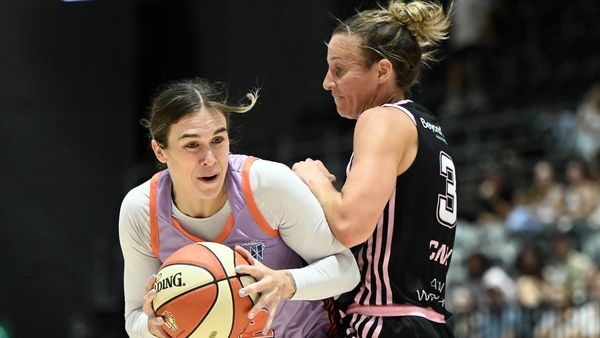
With keto diets on the rise, carbohydrates are seen as the demon of our diets and we’re constantly look for ways to cut them from our plates. The truth however is that we need carbohydrates in the right amounts for our health to thrive. This important macronutrient is the main player that the body needs for energy, hormone balance, brain health and exercise recovery. Carbohydrates aren’t something to be feared but we do need two balance them in right quantities (anywhere from 40%-60% of the energy from our diets) as overeating this starchy food group can lead to weight gain, sluggishness and put us at risk of insulin resistance which leads to type 2 diabetes.
Dietary carbs are broken down into glucose and then stored as glycogen in the liver and muscles for readily available fuel. There are two types of carbs - simple carbohydrates are found in biscuits, cakes and white bread and these are quickly digested and converted into glucose. The other carbohydrate category is ‘complex’ carbohydrates which are fibrous wholegrains such as grains, lentils, beans along with fruits and vegetables and these move through the body at a slower rate, keeping you fuller for longer.
Having balanced glucose levels by re-thinking the way you eat your carbs will set the stage for controlled weight loss, fewer energy dips, less cravings, and improved focus whist helping to prevent type 2 diabetes in the future and here are the six non-negotiable carb rules that need to be on your radar.
Cook your carbs a day before you eat them
All foods have a glycemic index or GI (a ranking given to carbohydrate-containing foods depending on the rate they are digested and their impact on blood sugar levels). The higher the GI the greater the blood sugar response a food creates which can result in cravings and overeating.
It might sound wacky but cooled down carbohydrate foods such as potatoes, rice, beans and pasta before eating can actually lower the GI of the food by rearranging the structure of resistant starch contained in the food.
What’s more cooking foods, leaving them for a day or two in the fridge and then reheating them before eating also increases resistant starch. The science is there - one study showed that the resistant starch in wheat increased from 41% to 88% when it was heated and cooled down.
Eat veg first, then protein, and finish with carbs
Sequencing your meals - ie learning to become meticulous about the order in which you eat your breakfast, lunch and dinner is one of the easiest ways to curb carb-laden comfort food cravings and unnecessary snacking in between meals. Divide your plate up into different categories including vegetables, proteins, healthy fats and carbohydrates and eat foods in this order.
Let’s take an example; if you were eating a cashew chicken and veg-stir-fry with rice you’d eat your non-starchy veg like broccoli and spinach first, followed by chicken, nuts and finally rice to help balance out your body’s blood sugar response.
Freezing bread lowers its glycemic index
Freezing bread isn’t just a way of extending the shelf life of your slices - defrosting frozen bread before popping it in your toaster can actually lower its glycemic index, stopping blood sugar levels from spiking. Having said that, freezing your loaf doesn’t give you a free pass to skip wholemeal bread in favour of white. Rye, spelt or traditional wholemeal bread are all better choices for their high fibre content.
Go for a walk after a carb-heavy meal
Embracing the cold is probably the last thing you feel like doing after a carb-laden meal, but post-eating movement is what your body craves. Physical movement after eating allows for increased glucose uptake into your muscles which reduces the amount of insulin that your pancreas needs to churn out. If you can brave the freezing temperatures, research shows that a 15-minute walk covering 1,500-1,600 steps helps to improve post-meal blood glucose profile. As an alternative, pacing up and down the stairs or walking back and forth from room to room might make family members or house mates think you’re loopy, but your body will thank you for it.

Try swapping out carbs for foods that mimic them
There are so many ways to scale down carbohydrate intake without making yourself miserable. Swap plain flour with almond or coconut flour in baking and in savoury dishes substitute rice for grated cauliflower, pasta for courgetti and bread for Insta-pretty sweet potato toast. Make your burgers bun-less and ditch tortilla wraps for little gem lettuce leaves or whizz up TikTok’s viral cloud bread (a keto bread made with egg white).
Choose fibre-rich carbohydrates

When it comes to choosing the best carbohydrates, fibre (a key component in carbohydrate foods) is your friend. But in order to navigate the minefield that is nutrition labels, you need to know how much fibre your body needs. According to current guidelines, 30g is the magic number yet only a fraction of us obtain this amount on a daily basis, in fact the average adult intake in the UK currently sits at 18g which is just 60% of what it should be and close to the quota prescribed for a 2-year-old child. Oats and quinoa are both fibre-heavy carbohydrates.
As a general rule high fibre foods are those which contain 6g per 100g and anything below 3g of fibre per 100g is considered a low fibre food, so make sure you’re on the lookout.







